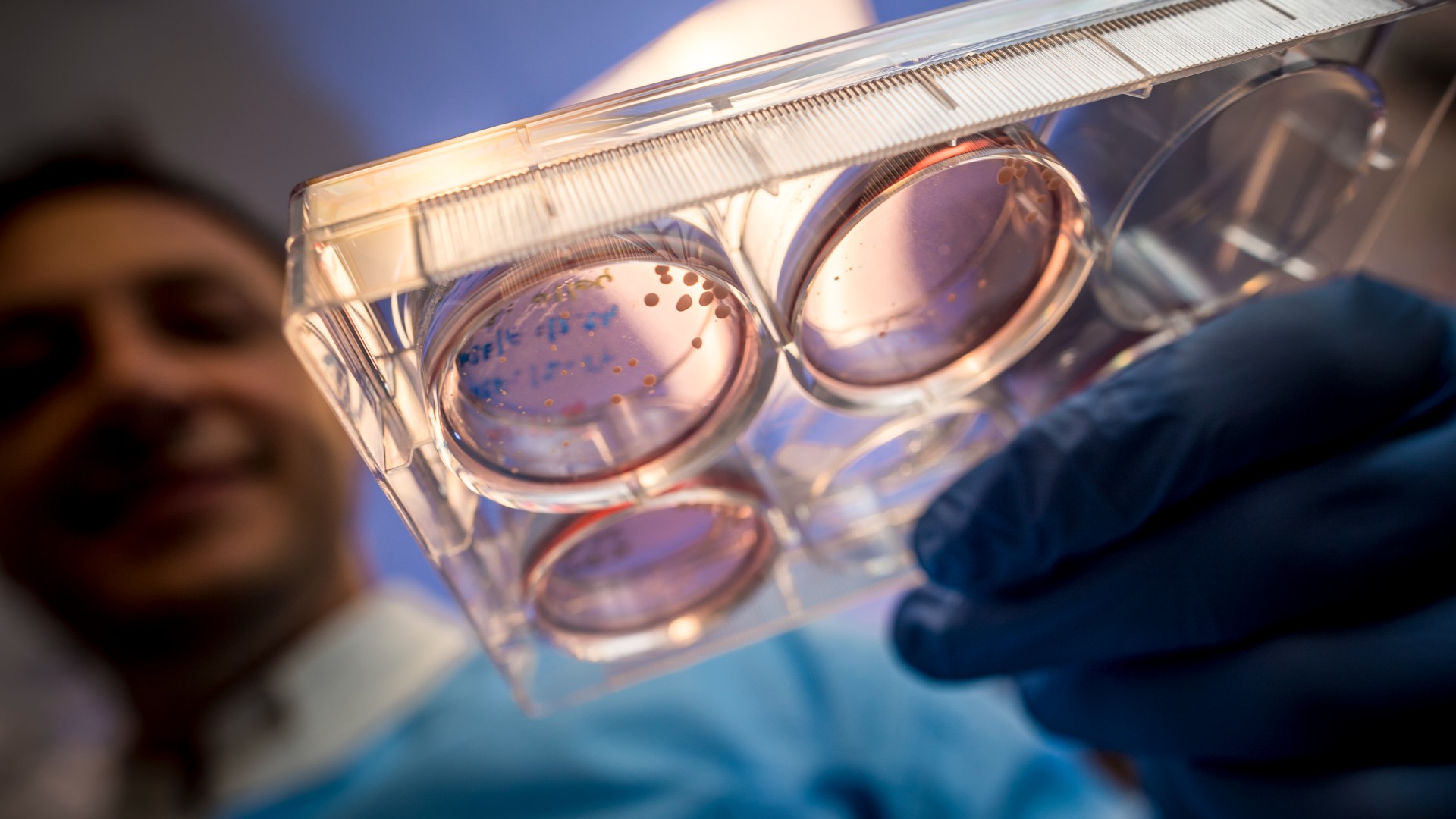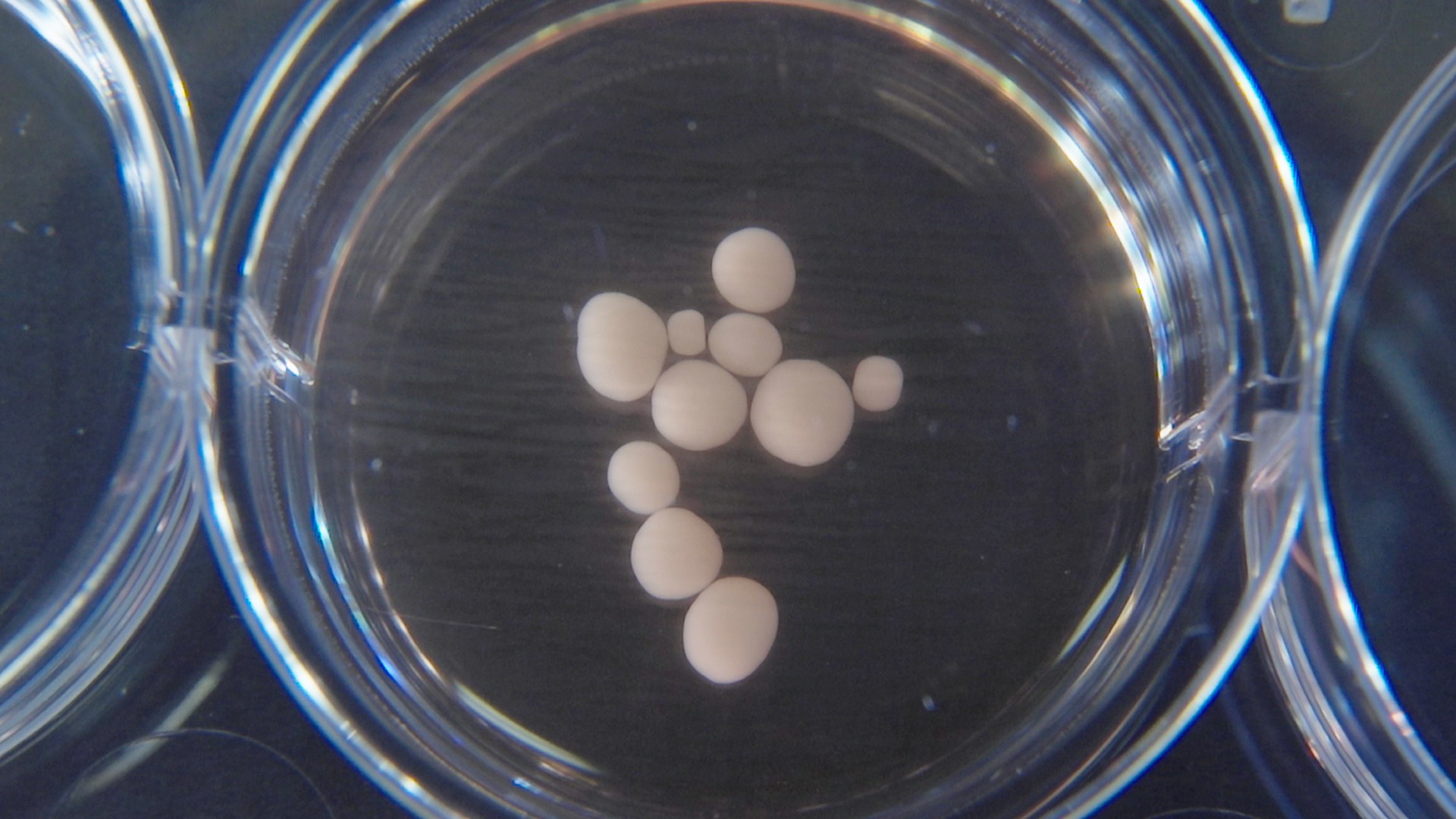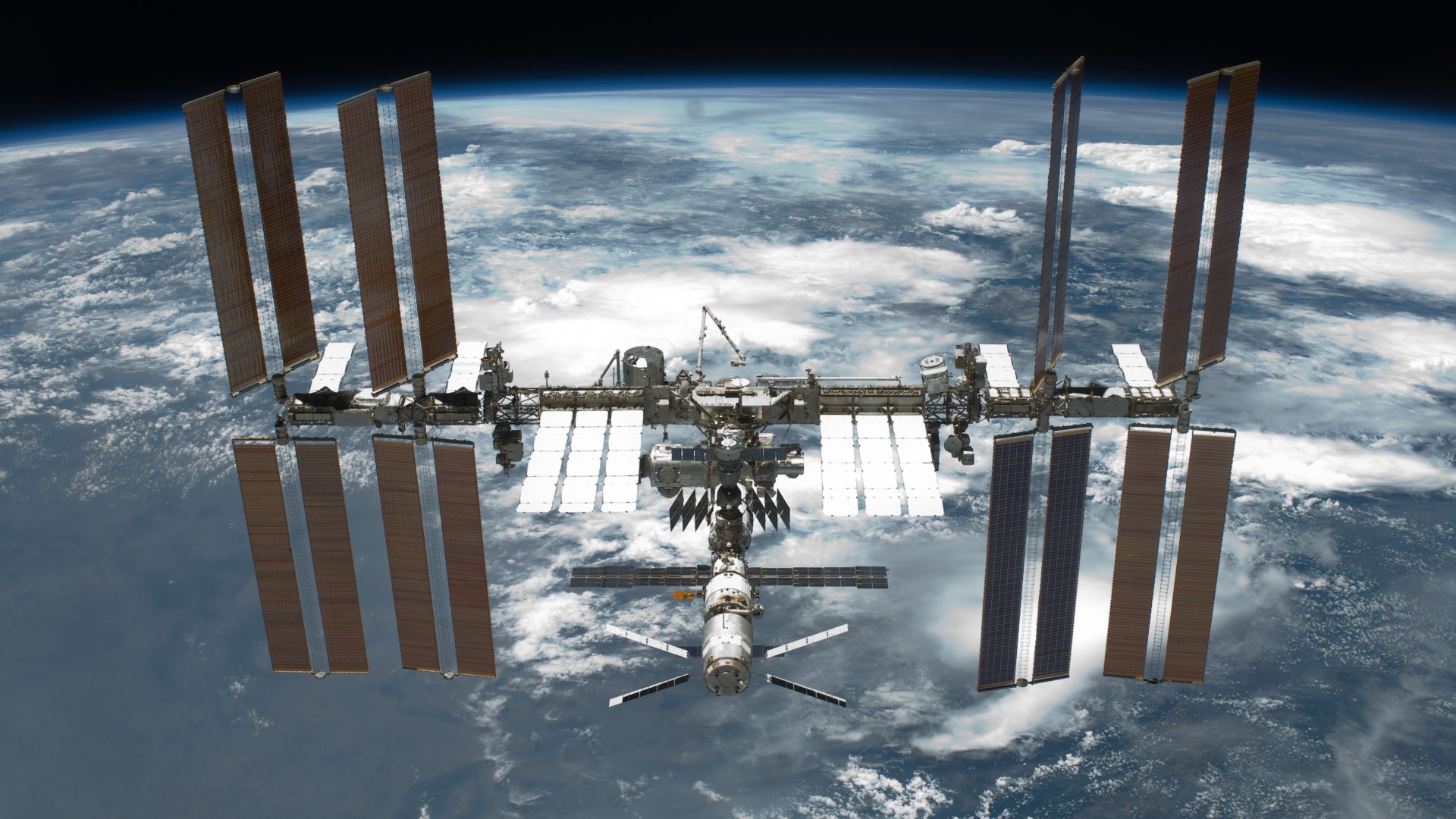
Out in space right now, scientists are growing tiny, three-dimensional models of human organs. What may feel like a scene pulled from the beginning of a sci-fi film is actually a relatively new application of a type of research that's already breaking boundaries of discovery back on Earth.
From tiny, beating hearts to "mini-brains," so-called organoids are usually grown from human stem cells that, with the help of a cocktail of growth chemicals, can be pushed to self-organize into 3D structures that resemble tissues in the human body. Unlike traditional animal models, such as mice or monkeys, organoids allow scientists to more accurately recreate the unique intricacies of human organs. Therefore, these tiny organs could help accelerate drug development by helping to reveal which compounds will really work in humans and which ones won't.
Organoid research can be described as out of this world — in some cases, literally so.
Since 2019, tiny models of organs — including the brain, heart and breast — have been grown on the International Space Station (ISS). But this research raises a question: Why are scientists crafting miniature organs in space?
Related: Tiny lab-grown testicles look remarkably like the real thing under the microscope
Aging organoids in microgravity
One reason is that the harsh environment of space could help scientists study aging and related disorders that affect humans back on Earth.
Alysson Muotri, a professor of pediatrics at the University of California, San Diego (UCSD), has been sending human stem cells to the ISS for years, with the goal of growing brain organoids that model various diseases. Disorders such as Alzheimer's disease can take decades to develop in a person, but studies suggest that the low gravity in space can accelerate aging in cells. So, by studying brain organoids in microgravity, scientists could pinpoint how age-related changes happen and help devise treatments to prevent them.
Many approaches to modeling the aging brain have involved stressing neurons in lab dishes, by adding certain chemicals, for example. However, these experiments don't capture what really happens as the body ages, Muotri told Live Science. "You don't receive like a cascade of molecules in your brain that makes you age overnight," he said.
The team's organoid research was inspired by the NASA twins study, during which astronaut Scott Kelly went to space for a year while his identical twin brother, Mark, stayed on Earth. When Scott came back, he showed signs of enhanced cognitive decline compared with his brother; he found it harder to learn and memorize things, for instance.
It's unknown why these effects were seen, Muotri said. One theory is that it could be because microgravity reduces the activity of an enzyme called telomerase, which helps reverse the natural process whereby sections of DNA at the end of our chromosomes shorten as we age, he said. These aglets at the ends of our DNA are called telomeres, and because shrinking telomeres are linked to aging, some scientists think lengthening telomeres could fight aging and extend the human life span.
In an upcoming paper, Muotri's team will fully describe how the brain organoids are behaving on the ISS — but from what they can tell so far, the organoids that have already returned to Earth are showing signs of accelerated aging, Muotri said. The brain organoids show features of neurological diseases, such as degeneration and cellular stress, commonly seen in several conditions. This has allowed the researchers to test new drug candidates for the diseases, with promising early findings.
"The first paper will report the first drug that was discovered in space for a brain disease," Muotri said. However, the exact publication date has yet to be confirmed.
Related: In a 1st, 'minibrains' grown from fetal brain tissue

Tiny tumors in space
The NASA twin study also inspired another UCSD research team to grow organoids in space — but rather than minibrains, they're tiny tumors. The team is led by Dr. Catriona Jamieson, a professor of medicine.
After returning to Earth, Scott Kelly was found to have signs of shortened telomeres, DNA damage and signaling molecules in his blood that are known to activate certain genes that allow cancer to grow and spread. This suggests that the stressful conditions in space could somehow stimulate cancer growth and could therefore be a good model for studying how the disease develops, Jamieson told Live Science.
The team started by sending blood stem cells to space, and after just one month, the cells showed signs of cancer-related genetic mutations being switched on. These changes were tied to abnormal growth and division in the cells.
The researchers then sent a bunch of tumor organoid models of leukemia, colon cancer and breast cancer into space with the private Axiom Mission 1. They found that the models also grew "dramatically" while on board. The cells within the organoids also switched on a gene called ADAR1, which codes for an enzyme thought to allow cancer to multiply. In a separate experiment, the team were able to show that two drugs which inhibit ADAR1 — fedratinib and rebecsinib — could slow the growth of the miniature tumors.
Now, as part of their latest launch to the ISS in January 2024, the team is testing the cancer-busting potential of these drugs in more breast cancer organoids.
"We're very pleased to work with NASA on trying to accelerate the development of the world's first ADAR inhibitors, a small molecule that would be given intravenously," Jamieson said.
Related: Scientists develop 'crying' model of human eye tissue

The future of organoids in space
This research is as much about protecting people on Earth as it is for helping astronauts in space. One day, for instance, Jamieson envisions that people taking part in commercial space flights could be given a pill before they go, to protect the stem cells in their blood from turning cancerous. Back Earthside, using their discoveries in space, the researchers are planning to start a clinical trial of rebecsinib later this year to target myelofibrosis, a blood cancer that scars the bone marrow.
Other researchers have taken advantage of the potential dual benefits of this kind of extraterrestrial research. They include Catherine Yeung, an associate professor in the School of Pharmacy at the University of Washington, whose team has been studying how the accelerated aging environment in space affects the kidneys.
Rather than organoids, Yeung's team is using a different model of human tissue known as an "organ-on-a-chip" device. This technology mimics human tissues on credit-card-sized devices and are seen as complementary to organoids.
Related: Scientists invent 1st 'vagina-on-a-chip'
"If we can learn things from space that can help us treat conditions on Earth, I think that's the overarching goal — I don't know that we need to choose one or the other," Yeung told Live Science.
Growing organoids on the ISS is very different from doing so on Earth, Muotri said. For example, you're limited by the amount of lab equipment you can have and there's always a risk that the rocket launch will be canceled at the last minute, he said. Returning the organoids to Earth can also be quite "perilous," Jamieson said, as the load carried by the spacecraft often lands in the ocean.
Nevertheless, the experts hope to use these organoids to surpass new frontiers of discovery.
"I'm excited about working in space," Jamieson said. "I think this is a literal cancer moonshot, and we've found a cancer kill switch."
Ever wonder why some people build muscle more easily than others or why freckles come out in the sun? Send us your questions about how the human body works to community@livescience.com with the subject line "Health Desk Q," and you may see your question answered on the website!







